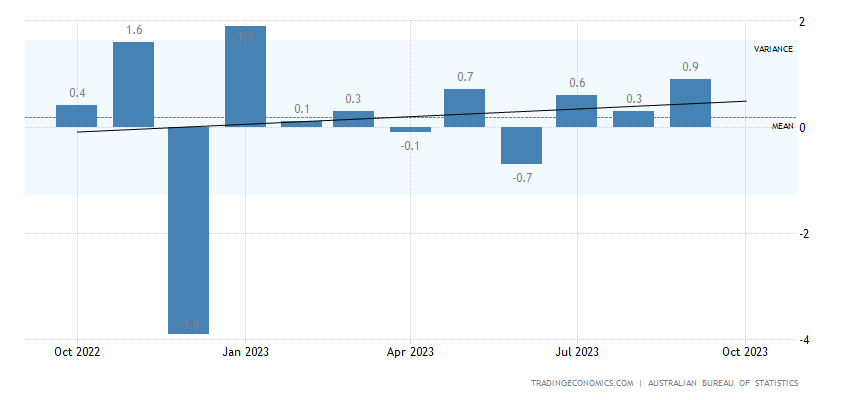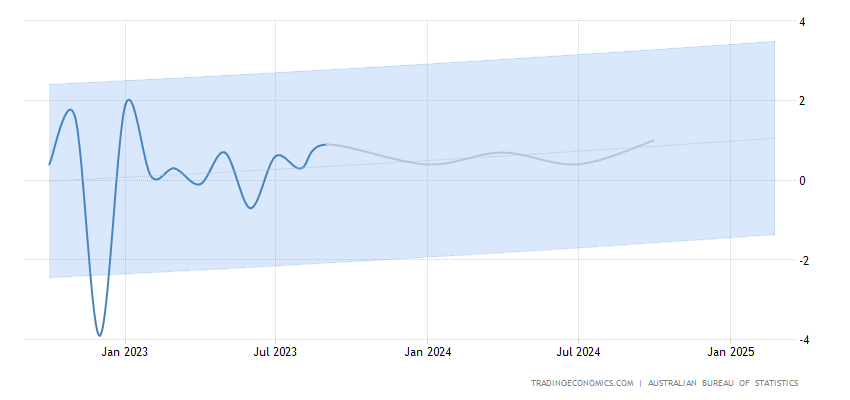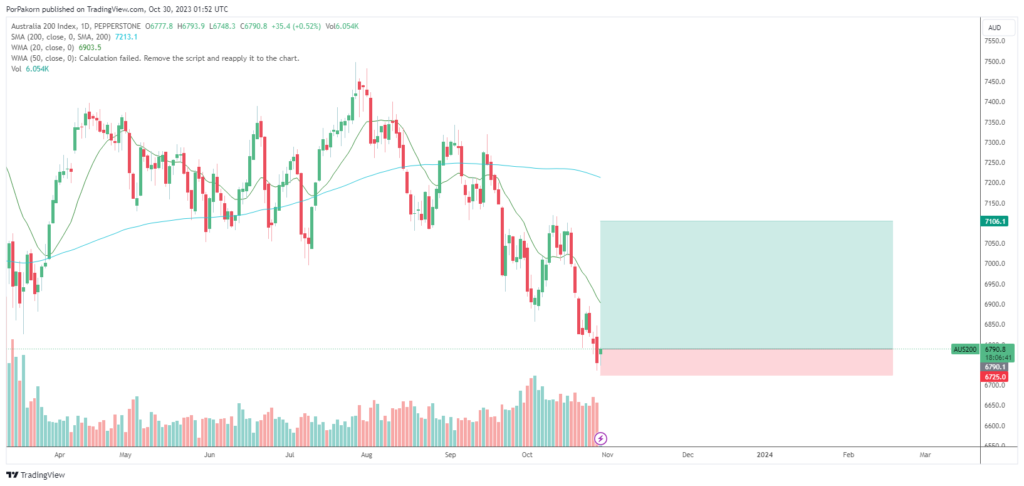Introduction:
In the ever-fluctuating world of economic indicators, Australia’s retail sector stands as a robust barometer of consumer sentiment and overall economic health. For September 2023, retail sales in the Land Down Under witnessed a remarkable resurgence, showcasing a spirited momentum that defied earlier expectations. This report delves into the intricacies of this retail renaissance, examining the factors driving the surge in detail and assessing the implications for both consumers and businesses.
Retail Resurgence Down Under:
In an intriguing turn of events, retail sales in Australia experienced a pronounced upswing, with a month-on-month increase of 0.9% recorded in September 2023. This surge marked a stark acceleration from the previously revised 0.3% gain witnessed in August. Notably, this remarkable performance extended beyond a one-off event, making it the third consecutive month of growth in retail turnover. The magnitude of this surge has not been witnessed since the start of the year, underscoring its significance. To further elucidate, this comprehensive analysis will segment the various facets of this retail renaissance, with an emphasis on the sectors that contributed most significantly to this phenomenon.
Department Stores: Leading the Charge
The department store sector emerged as the flagbearer of this retail revival, recording an impressive 1.7% increase in sales in September, a sharp contrast to the 0.6% gain in August. What fueled this surge? It can be attributed to an unusually warm start to the spring season, which encouraged consumers to step out and shop. This upturn in department store sales is indicative of a broader trend in consumer behavior, where changing seasons have a palpable impact on spending habits. The sector, driven by the allure of fresh collections, discount sales, and promotional events, has indeed seized the moment.

Household Goods: A Tech Boost and Rebate Bonanza
Another facet of this retail resurgence is the household goods sector, which experienced a 1.5% growth in sales, in stark contrast to the -0.1% performance in August. This exceptional performance was underpinned by a perfect storm of factors. The release of a new iPhone model generated significant buzz and attracted tech enthusiasts in droves. Moreover, a well-conceived rebate program in Queensland provided a financial incentive that motivated consumers to invest in household goods. This intriguing confluence of technology and economics paints a vivid picture of the retail landscape in Australia.
Solid Performance in Food and Other Retail Sectors
The food sector witnessed a commendable 1.0% increase in sales, compared to a -0.1% decline in August, attesting to the resilience of this essential category. Furthermore, the other retailing sector posted a noteworthy 1.3% growth, outperforming the 0.7% growth in the preceding month. These sectors have demonstrated a remarkable ability to adapt and respond to the evolving consumer needs and preferences, resulting in consistent growth.
Shifts in Clothing Sales and Hospitality
In contrast to the overall retail surge, clothing sales showed a relatively modest 0.3% increase in September, compared to a more robust 1.4% gain in August. This change may signify a shift in consumer spending habits, influenced by seasonal changes and evolving fashion trends. On the hospitality front, sales in cafes and restaurants remained stagnant, showing no growth after two consecutive months of expansion. The resilience of this sector remains paramount, as it mirrors the dynamic nature of the hospitality industry.

Across the Nation: A Synchronized Uptick
The remarkable retail revival was not confined to specific regions but spread across the entire Australian continent. New South Wales posted a 1.3% growth in retail sales, a significant jump from the 0.2% gain in August. Neighboring Victoria also saw a notable uptick, with a 1.2% increase, compared to the 0.4% growth the previous month. South Australia experienced a turnaround, moving from a -0.2% decline to a 1.0% gain. Queensland posted a modest 0.5% increase, surpassing the 0.3% growth in August. Tasmania stood out with an impressive 1.8% surge, reversing the -0.4% performance in the preceding month. The Northern Territory and the Australian Capital Territory joined the upward trajectory with 0.5% increases, recovering from slight declines in August.
Implications and Expert Advice:
The impressive retail sales surge we witnessed in Australia this past September speaks volumes about the intricate dance of economic forces at play. It’s a reminder that in the world of retail, consumer behavior and the seasons are intertwined like never before, demanding nimbleness and adaptability from businesses. As Paul Krugman would say, it’s not just about numbers; it’s about the art of understanding and responding to these trends.
The resurgence in department store sales isn’t merely a statistical blip but a vivid illustration of how consumers sway with the seasons. It underlines the undeniable need for retailers to be savvy and shift their strategies in sync with these changing winds. As the weather shifts, so do consumer preferences, and it’s essential to be ready to ride the wave.
On the other side of the retail spectrum, the household goods sector’s robust performance unveils a strategic symphony. Technological advances and well-thought-out rebate programs have composed a tune that resonates with consumers. This isn’t just luck; it’s the result of calculated marketing and promotions, showing how businesses can orchestrate demand through strategic moves.
Now, let’s talk about the significance for investors and businesses. These retail trends aren’t just a spectator sport; they are a playbook for those in the financial arena. As any seasoned economist like Krugman would advise, understanding consumer preferences and economic dynamics is the key to informed investment decisions and strategies. The retail landscape is like a constantly evolving puzzle, and the better you can put the pieces together, the more successful your investment strategies will be.

In this ever-shifting landscape, diversification emerges as the trump card for investors and businesses alike. It’s a way of spreading your bets and staying flexible to adapt to the ever-changing rhythms of consumer behavior. What worked yesterday might not work tomorrow, so it’s essential to have a diversified portfolio and an agile strategy.
In summary, the September 2023 retail sales surge in Australia is a testament to the tenacity of the retail sector. It shows us that adaptability is the name of the game, whether you’re dealing with department stores, household goods, or any other retail sector. The geographical footprint of this retail revival paints a diverse picture across states and territories. To those in the financial trenches, I’d say this: keep a close eye on these trends, and be ready to adjust your strategies to make the most of this dynamic and ever-changing retail landscape. It’s a symphony of opportunity for those who can hear the music and dance to its tune.






Thank you for your sharing. I am worried that I lack creative ideas. It is your article that makes me full of hope. Thank you. But, I have a question, can you help me?